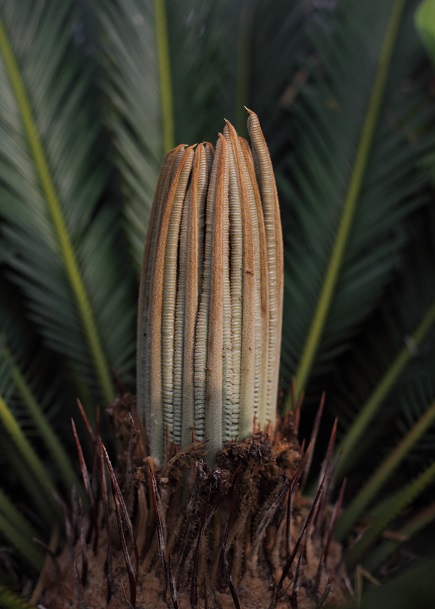MIYAMOTO Ryuji: Invisible Land
May. 14—Jul. 15, 2019
- May. 14—Jul. 15, 2019
- Closed Monday (however open on July 15)
- Admission:Adults ¥ 700/College Students ¥ 600/High School and Junior High School Students, Over 65 ¥ 500
The Tokyo Photographic Art Museum is delighted to present a solo exhibition of the work of Miyamoto Ryuji, who continues to exhibit his work in Japan and abroad. Miyamoto has become a presence widely known for his unique focus on the transformation of the city, with architectural spaces as his subject matter, and scenes of ruins. In recent years, his activities have presented new directions, including planning and managing an art project on his parents’ native place, Tokunoshima, one of the Amami Islands.
This exhibition includes early works, photographs from his travels in the cities and remote areas of other parts of Asia, his pinhole photographs, and portraits. It is an exhibition concerning persons and places no longer to be seen, sights that one surely must have seen yet are now an invisible land.
Miyamoto Ryūji
Born in Tokyo. Graduated from the graphic design department at Tama Art University. He worked in the editorial department for architecture magazines, and in 1975 he began to work as an independent photographer. He has received high praise for "Architectural Apocalypse," in which he photographed demolition sites (1986), and for "Kowloon Walled City," the photography of a high-rise slum in Hong Kong (1988). In 1989, he received the 14th Kimura Ihee Photography Award. In 1996, he participated in the 6th Architectural Exhibition of the Venice Biennale, and received the Golden Lion Award for his exhibition of photography taken of buildings that were destroyed in the Great Hanshin-Awaji Earthquake. In 2004, he had a one-man exhibition at the Setagaya Art Museum, and he has shown work in many group exhibitions domestically and abroad. In 2005, he received the 55th Minister of Education Award for Fine Arts, and in 2012, he received the Purple Ribbon Medal from the Japanese Government.
Concerning the city:
Photography is a construct of light and dark and photosensitive material. Whether photography does or doesn’t go digital, I believe that basic rule still holds. Light passing though a lens or pinhole burns an image on photosensitive material kept in a dark space, fixing a set view of the world. The act of the photographing is always an encounter between light and photosensitive material in darkness. As the dark underside of the city grows still deeper and darker, I’m sure we won’t run out of further encounters between light and whatever photosensitive apparatus. Ryuji Miyamoto Shin Kenchikuno Mokushiroku (Architectural Apocalypse), Heibonsha, 2003
From Eastern Bazaar, Can Tho, 1992
From Architectural Apocalypse, Sapporo Beer Ebisu factory, 1990, Collection of the artist, (c) Ryuji Miyamoto Courtesy of Taka Ishii Gallery Photography / Film
From Lo Manthang 1996, 1996
From Tower&Poles, 2011, Collection of the artist, (c) Ryuji Miyamoto Courtesy of Taka Ishii Gallery Photography / Film
Shima Means Community:
The people called their village wakkyshima; wakkya means “our” and shima means a small community and not “island” as in standard Japanese. Everyone in the shima, the community, helped out with festivals and funerals. A tiny baby, I grew up surrounded by the people of our shima. Ryuji Miyamoto
From Shima Means Community, 2010, Collection of the artist, (c) Ryuji Miyamoto Courtesy of Taka Ishii Gallery Photography / Film
From Shima Means Community, 2010
□ Co-organized by The Asahi shimbun
□ With the Special cooperation of Canon Marketing Japan Inc.
Japanese web site
Events
- Discussion [in Japanese] KURAISHI Shino, HAYASHI Michio, MIYAMOTO Ryuji
-
May. 25
(Sat)
14:00~16:00
Venue: Tokyo Photographic Art Museum 1F. HALL
Seating Capacity: 190. (Entrance will be in order of numbered tickets issued upon arrival, all seats unreserved).
Entrance Fee: Free with numbered ticket.
Numbered tickets will be issued at the information desk on the 1st floor from 10:00 in the morning of the same day. Discussion - Discussion [in Japanese] SASAKI Mikiro, MIYAMOTO Ryuji
-
Jun. 22
(Sat)
14:00~15:30
Venue: Tokyo Photographic Art Museum 1F. HALL
Seating Capacity: 190. (Entrance will be in order of numbered tickets issued upon arrival, all seats unreserved).
Entrance Fee: Free with numbered ticket.
Numbered tickets will be issued at the information desk on the 1st floor from 10:00 in the morning of the same day. Discussion - Gallery Talk by Exhibition Curator [in Japanese]
-
May. 24
(Fri)
14:00~
Jun. 14 (Fri) 14:00~
Jun. 28 (Fri) 14:00~
Jul. 12 (Fri) 14:00~
The curator in charge of the exhibition will give an explanation of the exhibits from 14:00 on the dates. Participants should gather at the entrance to the 2nd floor gallery with an entrance ticket stamped for that day.



![チラシ1[pdf]](http://topmuseum.jp/upload/4/3409/thums/miyamotoA4.png)